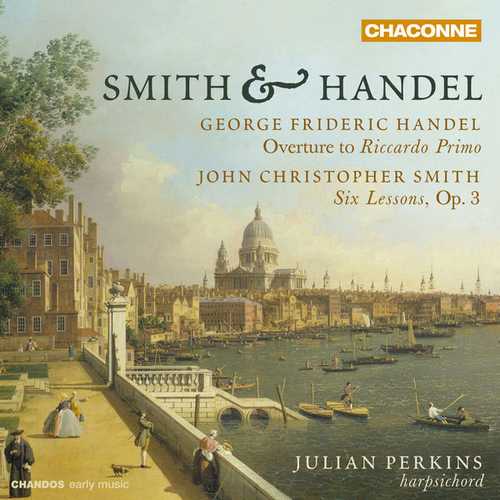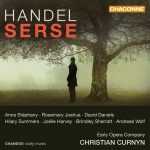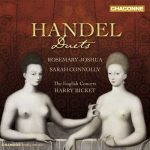

Composer: George Frideric Handel, John Christopher Smith
Performer: Julian Perkins
Format: FLAC (tracks)
Label: Chandos
Catalogue: CHAN0807
Release: 2015
Size: 1.58 GB
Recovery: +3%
Scan: yes
01. Handel: Riccardo Primo: Overture (version for keyboard, HWV 456.5)
Smith: 6 Suites of Lessons, Op. 3: No. 1 in A Major
02. I. Allegro
03. II. Larghetto
04. III. Vivace
Smith: 6 Suites of Lessons, Op. 3: No. 2 in C Minor
05. I. Andante allegro
06. II. Allegro
07. III. Allegro
Smith: 6 Suites of Lessons, Op. 3: No. 3 in F Major
08. I. Andante allegro
09. II. Allemande
10. III. Allegro
Smith: 6 Suites of Lessons, Op. 3: No. 4 in B-Flat Major
11. I. Andante
12. II. Allegro
13. III. Tempo di gavotte
Smith: 6 Suites of Lessons, Op. 3: No. 5 in G Major
14. I. Vivace
15. II. Allegro
16. III. Allegro
17. IV. Minuetto – 5 Variations
Smith: 6 Suites of Lessons, Op. 3: No. 6 in D Major
18. I. Cappricio [sic]
19. II. Allegro
20. III. Andante gustoso
21. IV. Gigue
The internationally acclaimed harpsichordist and early classical music specialist Julian Perkins here presents the premiere recording of six Suites for harpsichord by Handel’s assistant, John Christopher Smith. The new release on Chaconne also features an arrangement by Handel of the overture to his opera Riccardo Primo.
Music assistants often have a poor press. Franz Süssmayr is known only for his controversial completion of Mozart’s Requiem, while Robert Craft is known largely for his role as Stravinsky’s assistant. As Handel’s amanuensis, John Christopher Smith has suffered a similar fate. Moreover, confusion has prevailed as to his identity. His father shared the same Christian names and was Handel’s original amanuensis. Thus the omens for Smith’s musical legacy were poor from the start. This project seeks to reappraise Smith the composer, whose prolific music bubbles over with brilliance, wit, and charm – not to mention an irresistible penchant for trills!
As a man of the theatre, Smith cultivated a style that evinces a comic interplay between the baroque and rococo; in his pieces, athletic hand crossings, unpredictable figurations, sudden shifts from major to minor keys, and sequences built over repeated left-hand chords vie with one another to create music that is both technically demanding and theatrical.



